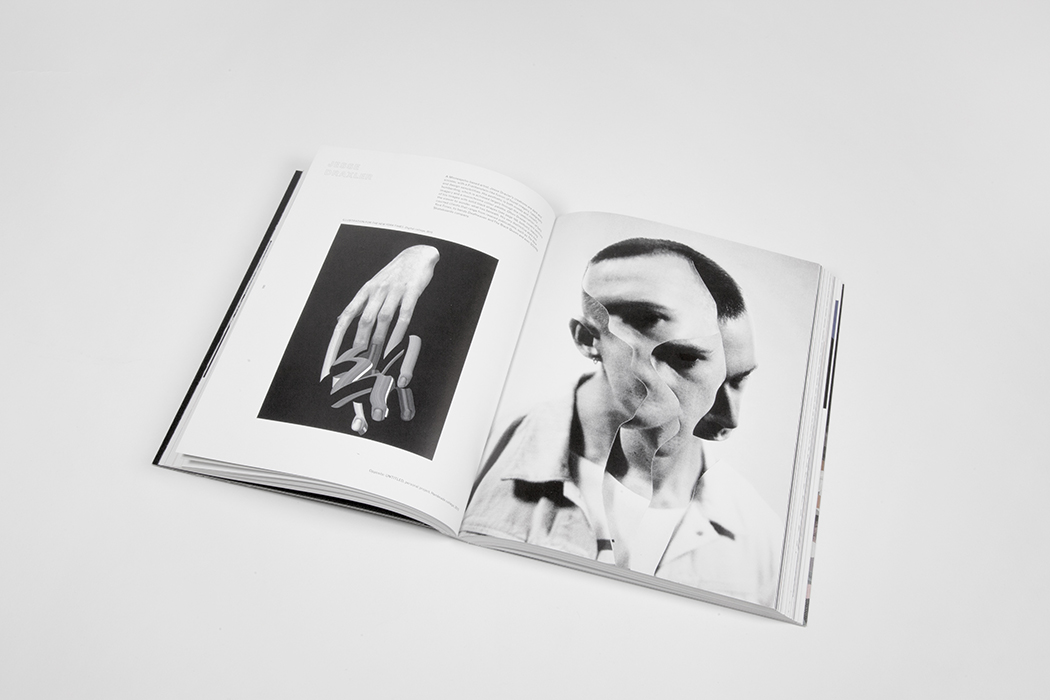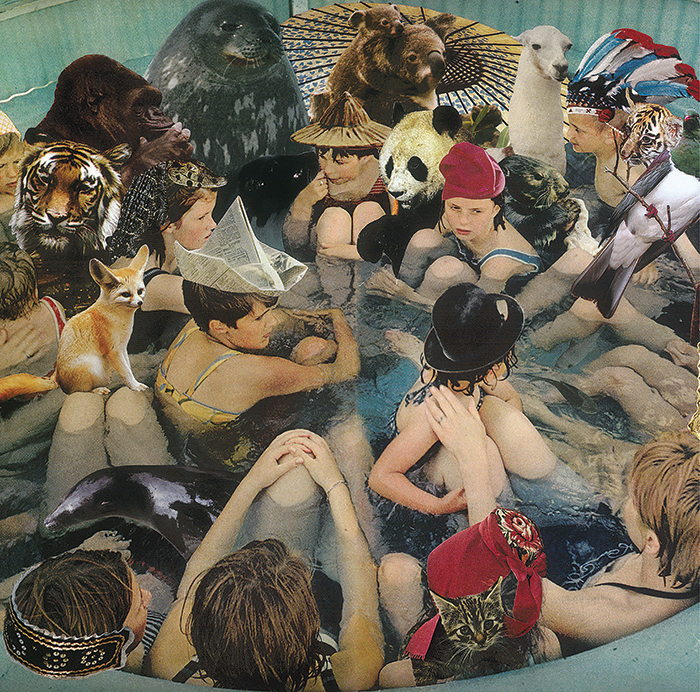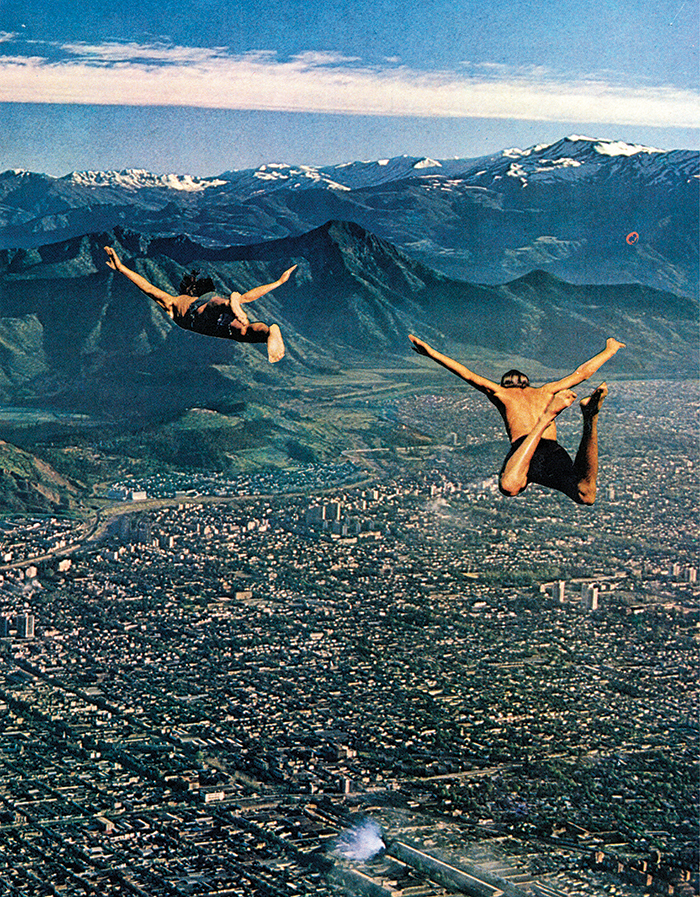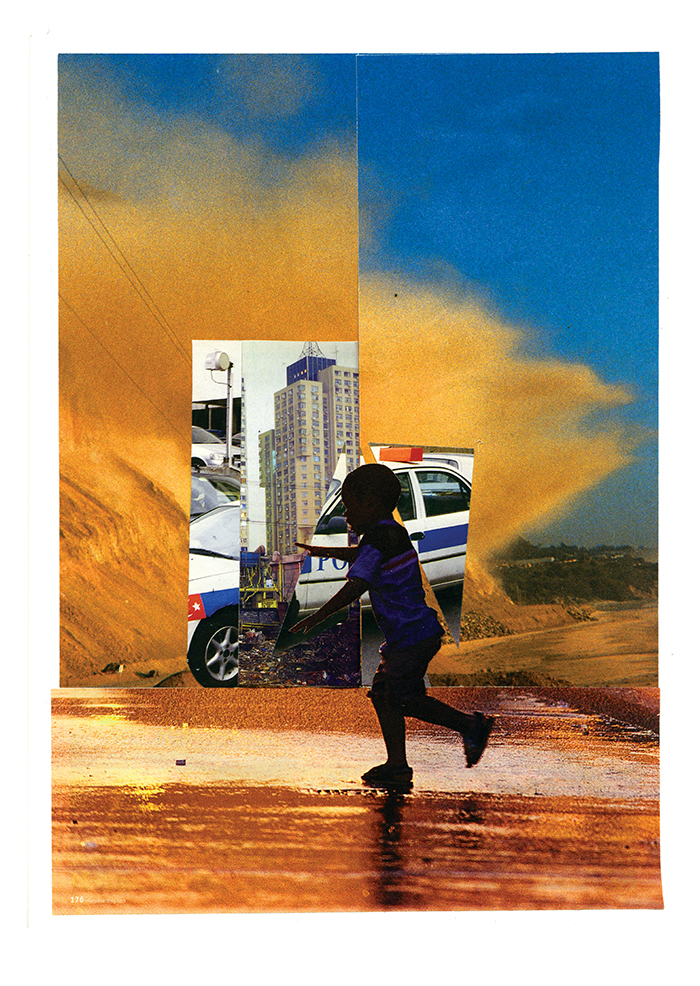Manchester-based creative studio DR.ME have a penchant for cutting stuff up and sticking it back together. Their 2014-15 project ‘365 Days of Collage’ demanded that the studio’s founders Ryan Doyle and Marc Edwards produced an original collage work every day using found imagery, a scalpel and some spray mount. They then sold each one online for a tenner, ensuring the works were able to be claimed by even the most humble of homes.
The team’s commitment to the project means it’s no surprise that their new book, Cut That Out: Contemporary Collage in Graphic Design expands on the same theme, this time looking outwards to celebrate fifty international creative studios or individuals for whom collage is a key component of their work. Designer-extraordinaire Stefan Sagmeister, Internet sensation Beth Hoeckel, New York Times illustrator Paul Sahre, and Leif Podhajsky (of Tame Impala album cover fame) are some of the more notable inclusions, but the fun of the book is in flipping through its many-layered pages and uncovering images by lesser-known creatives that are filled with surrealism, humour, and super-clever juxtaposition.
‘Cut That Out’ profiles 50 international creative studios for whom collage is the key component in their work. How did you go about choosing those you included?
A lot of the studios involved are people whose work we have admired for a long time. I think everyone has a list of people they check out regularly to see if they have any new work—the internet is great for that. Some studios we came across by working on collaborative projects throughout the years, some we found out in the real world at exhibitions or in books and magazines, Agnes Montgomery, for example, was selected because I was a big fan of the Person Pitch album by Panda Bear, so a quick Google search later and we were able to contact her. We were super happy when she agreed to be part of the book. Some are close friends or have become friends through the process. It was really quite easy to select 50 studios. We actually have enough for another book (or two).
What appeals to you about collage? For me, it has this comforting lo-fi appeal, (saying that, lots of the works in the book actually manage quite high production values.)
The infinite possibilities that you have at your fingertips and the immediacy, spontaneity and unpredictability of the medium. You can have a clear idea of what you want to create but the nature of the process always leads you down a different path. I like when you see a collage that at first glance doesn’t look like a collage or clever collages that use maybe 2/3 elements to convey an idea, feeling or emotion that is instantly recognisable.
When you make your own works of mixed-media (as you did with your project 365 Days of Collage), what is your process like? What are you hoping to achieve with each one?
The process really varies from project to project, Especially in 365 as that project was more of an experiment into what collage could be, and the process was mostly influenced by the constant search of something new—a new technique or a new material—and also what mood we were in that day. Some are surreal images playing with perspective while some are completely abstract mixed media. In doing this it kept the project interesting for us, otherwise creating the same thing every day for 365 days would become a bit tedious. From the 365 project we’ve then gone on to create larger collage pieces utilizing the techniques and materials we worked with during the project and the process for this is completely different—we take time to search for the image or images that will ignite the idea for the work in our head, and we then compose this image mentally before ever making anything physically and final.
I guess we hope to achieve a personal connection through an impersonal medium, painting with paper. It’s an interesting medium to work with in 2016 as your source material is infinite with the complete overpopulation of imagery that exists in the world now. It feels more daunting than, say, in the 1920s, but I am attracted to creating with a medium that has so many endless possibilities and allows you to say so much through reappropriation and experimentation.
Surrealism and collage have a long history of interaction. Is that sense of playfulness or randomness one of the things that appeal to you about the medium?
Playfulness is a key element to our whole ethos and work ethic, so yeah, the fact that collage has that quality and is spontaneous is appealing. Eike Koening once said,’learn through play’, and this has always been a mantra that we’ve adhered to with our studio. I think the colour palette and vibrancy that can be created from found imagery is what attracted us to the medium in the first place. I remember we created a drawing for a project—it was a geometric construction using gouache, which was nice, but that was about it. When we decided to incorporate cut-up imagery of renaissance paintings and Italian architecture, it took the image to the next level. Although sometimes it can seem random, I think when creating a collage you are always questioning why you think this element works with that element, so the surface randomness becomes contextualised through the process.
Where will you take your engagement with collage next?
I think as with everything there is a limit to what can be achieved with a certain medium, someone once asked, ‘how does it feel to be collage guys now?’ and this didn’t really sit right with me. I am much more interested in what’s next. Found imagery in whatever format will always play an important part in our work—just not necessarily the traditional cut-and-paste aspect of collage, which I think is represented in Cut That Out. The work presented in the book is so varied that sometimes you ask yourself, ‘is this even a collage?’ But that’s the point, really. Collage is everything. Different elements coming together to create something new. That’s what we’re always striving for.












